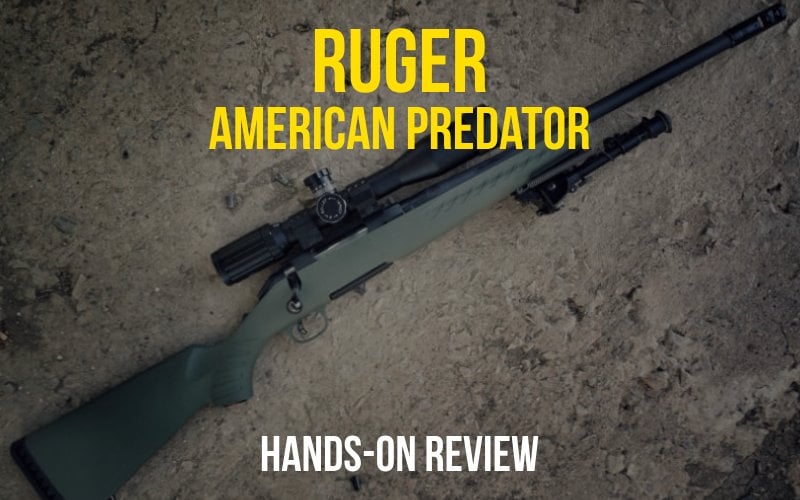
By Kip Staton
I first encountered the Ruger American rifles while working for a large firearms retailer in 2012. Immediately upon logging the guns into our system, I noticed something different about them.
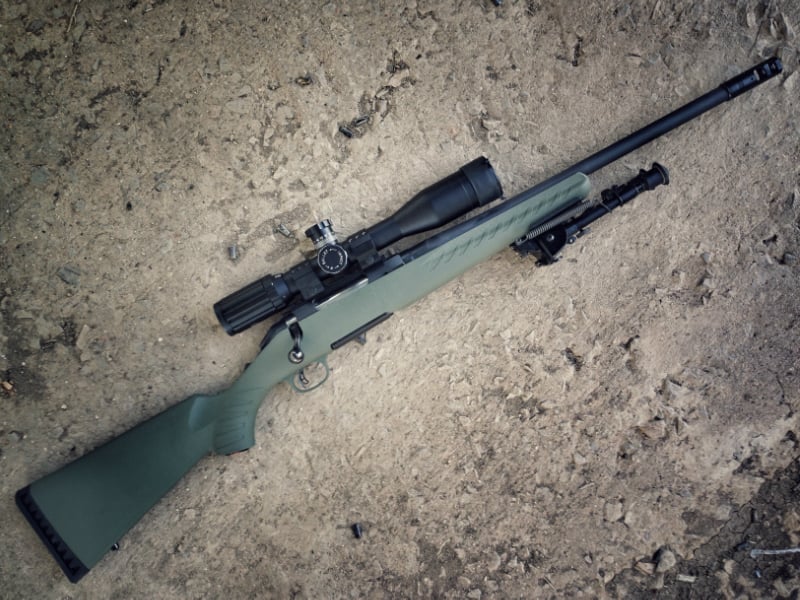
These guns just didn’t “feel” like the ~$350 dollar price tag suggested they should. The Ruger American seemed closer to a nice Tikka than a competitor to other cheap bolt guns, if that makes sense. The entire American line was very intriguing, right from the start.
Now that Ruger has expanded the series to include a true precision rifle, magnum models and even short rifles in 5.56 NATO and 300 AAC Blackout, I couldn’t resist picking one up to see if they lived up to all the hype.
Full disclosure, this rifle was purchased with my own funds. I was able to find it online for far less than the MSRP, delivered to my local dealer. This is the Predator model, which differs slightly from the standard hunting model in a few notable ways.
So, how does the Ruger American Predator stack up in a world awash with budget bolt guns? Very well, in fact.
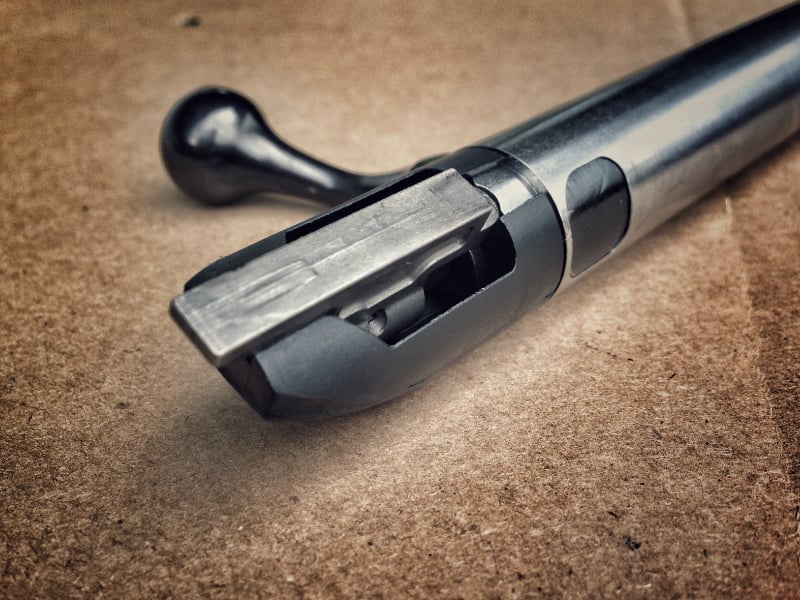
Distinguishing Features
If I described a rifle to you that had the following features, what would you guess the sticker price was?
- Three lug, 70 degree full bodied bolt
- Free floating hammer forged midweight barrel
- Adjustable trigger
- Pillar bedding
- Side bolt release
- Removable rotary mag
- Threaded muzzle
- 1 MOA Accuracy
- One-piece scope rail
Prior to the American series, you couldn’t get all of those features in a sub $400 rifle. And (if you couldn’t tell by the name) these rifles are 100% USA made. There just isn’t anything else out there that really compares, in this price range.
But I’d like to make the case that the Ruger isn’t just a nice budget rifle. It’s a nice rifle, period. Let’s get into the three main components: Action, stock and barrel.

RUGER American Predator 308 Win
$456.99
Price accurate at time of writing
- Action: Bolt-Action
- Caliber: .308 Winchester
- Barrel length: 18"
- Capacity: 4rd
- Thread: 5/8"-24
- Twist: 1:10" RH
Action
The Ruger American’s receiver is cut from 4140 chrome moly bar stock steel. Rather than using a traditional barrel lug to secure the action, Ruger went a different route entirely. The company’s “Power Bedding” secures the action into the stock via a set of embedded V-blocks and corresponding cuts on the receiver.
Much like traditional pillar bedding, this locks everything in place and provides a very secure fit between stock and action.
The top offers a full length rail, which gives plenty of options for mounting optics. Angular sides provide nice flat areas for both the ejection port and bolt release.
It’s a very simple receiver, yet is cleverly designed to provide quite a few inherently accurate attributes. The simplicity helps keep the cost low.
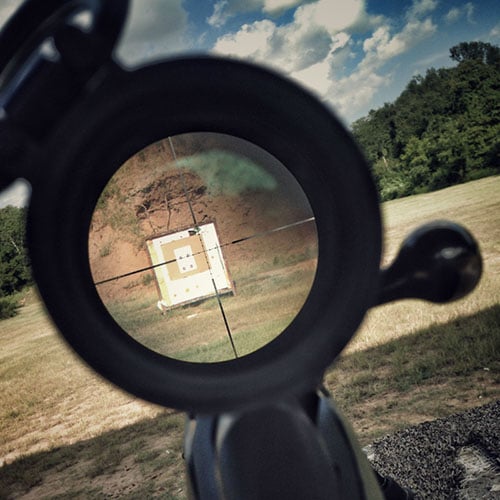
One of the best features of the rifle is the low 70-degree bolt lift. You can clearly see how much clearance there is between the bolt handle and optic in the above through-the-scope photo. This low lift is primarily due to the three lug design, but the bolt handle is also slightly curved for even more room. To top everything off, it’s easy to swap out the bolt handle to larger styles.
The bolt is also full-bodied, which means it rides in and out of the action with very little play. Aft of the bolt, you’ll find a striker status indicator tab and an ambidextrous tang safety. That striker is built with dual cams, which greatly reduces the effort to cock the action.
These dual cocking cams combined with the very low bolt lift and full-bodied design make the action very quick. Like I said, it subjectively feels like a Tikka. I’ll even go out on a limb and say it’s better than a stock Remington action in arbitrary terms of “feel.”
Ruger chose to put an adjustable trigger into the American, with a now-common trigger blade safety. By simply removing the action from the stock and adjusting a single screw, the weight of the trigger can be safely taken all the way down to three pounds.
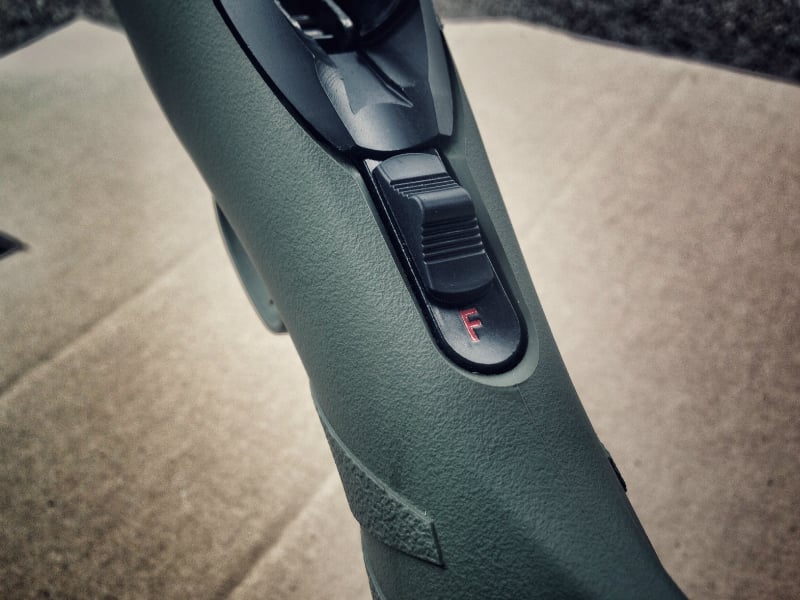
Invariably, the American trigger is going to be compared to the Savage Accutrigger. While the Accutrigger is a great product with many positive attributes, I’m not a fan of them.
Not many people know this, but it’s possible to actually push the left or right edges of the trigger face rearward on a Savage rifle and accidentally drop the striker onto the blade safety. The rifle won’t fire (this is good), but you then have a dead trigger… one that looks just like a live trigger.
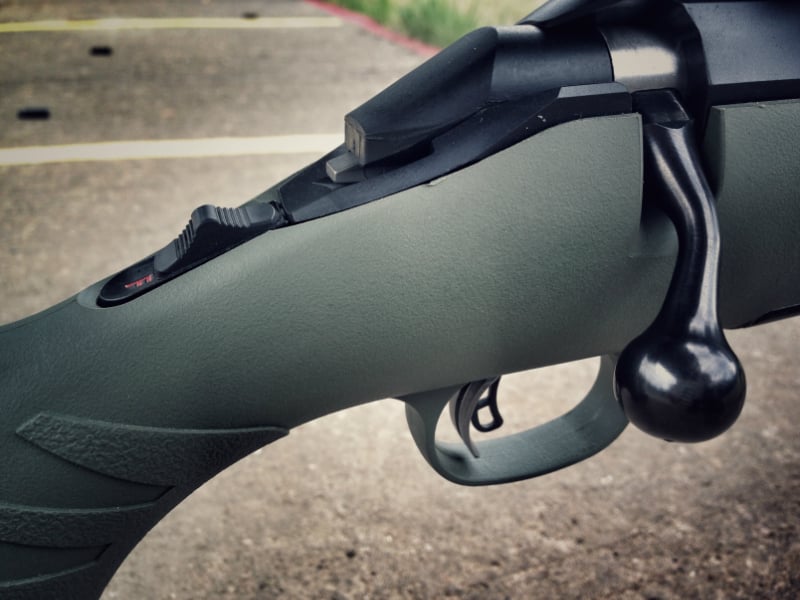
Conceivably, one could inadvertently release the striker on the rifle in the field via a brush with gear, clothing, etc., and not know that the rifle is no longer ready to fire. Resetting the striker is as simple as lifting the bolt handle and relocking the action, but that’s not something I want to have to worry about.
Thankfully, the Ruger American trigger does not exhibit this design flaw.
Stock
While the stock is shaped well, it unsurprisingly feels cheap. The barrel does free float within the forend channel, but it’s a tenuous free float. Forcing the gun into awkward shooting positions can sometimes cause the barrel to kiss the sides of the stock. But most of the time, it’s a true floating barrel.
The action sits within the set of previously mentioned steel v-blocks, which serve as pillar bedding. This, combined with the free floating barrel, creates an fantastic environment for accuracy.
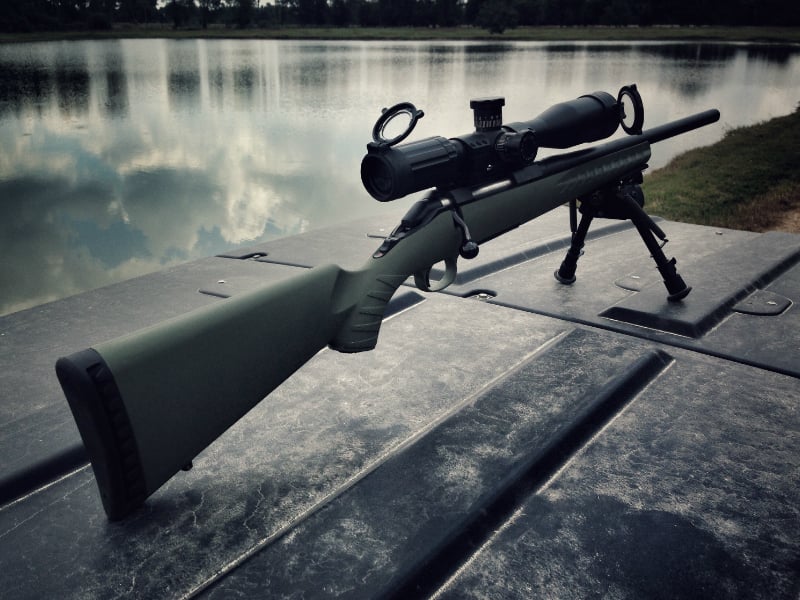
Ruger chose to make the magazine well as simple as possible. There are no moving parts within the stock, the latch and associated spring are all self-contained within the magazine itself.
Both the forend and grip area feature molded-in textured ridges, which look good and do their job. It’s also equipped with a pair of standard swivel studs, and an effective rubber buttpad. Other than the steel V-block bedding system, there’s nothing super out of the ordinary about the stock.
Ruger American 308 Barrel
The Ruger American Predator 308 is built around a gently tapered 18″ barrel. It’s the only caliber in the Predator line that’s 18″, and the only rifle in the entire American with an 18″ barrel and full length (I.E., not compact) stock. While the contour is heavier than the standard hunting models, it’s definitely not a bull barrel.
To compare to rifles that most are familiar with, it’s a lighter weight than the Remington SPS Tactical but heavier than the standard sporter SPS. Like many Ruger barrels, it’s hammer forged. The company has a great reputation for this type of barrel, and this one did not disappoint.
Ruger chose to coat the barrel with the same black oxide finish as the receiver. It’s been carted around in a Polaris ranger for at least an hour or so every day over the last month, and stored in the trunk of a car when not in the safe. It’s been an exceptionally humid summer, and there aren’t any rust signs yet.
The barrel is threaded into the receiver and secured via a smooth barrel nut. I want to call it “Savage style”, but so many manufacturers are using this method that I don’t think Savage has the monopoly on it anymore.
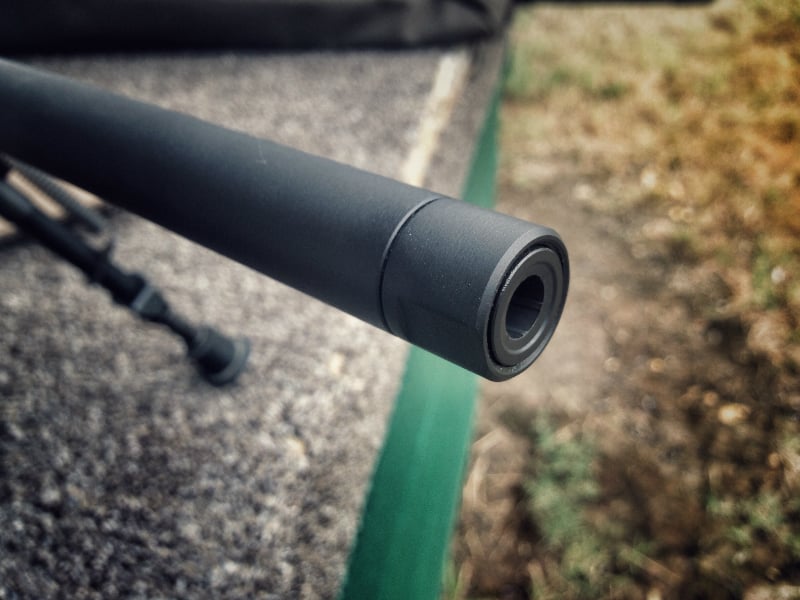
The muzzle is conveniently threaded in a standard 5/8×24 thread pitch. I elected to add a Surefire Pro Comp muzzle brake, in an attempt to make long shooting sessions more comfortable and aid in self-spotting at long distances.
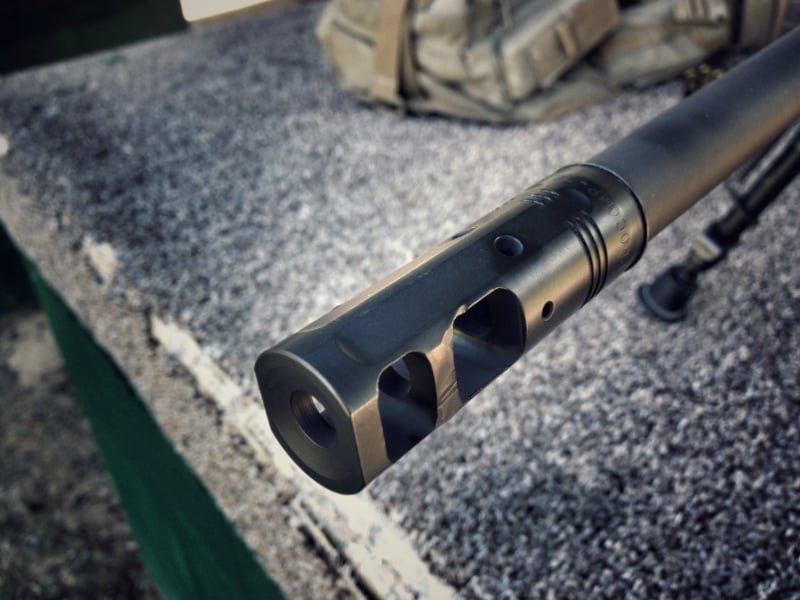
But how does it shoot?
One of my favorite optics is the SWFA 10X Super Sniper. Mine is an old model, with a mis-matched MIL/MOA reticle and turrets, but it’s always tracked 100% and has been flawless. It’s an ancient design, but it works and I like it. The SS10X is a workhorse, and it’s what I chose to use with the American Predator 308.
I tested for the rifle’s precision/accuracy with ZQI M80 ball and some handloads. With the ZQI, groups demonstrated an extreme spread of between 2″ and 4″, which is fairly average for this ammo. I’m totally fine with that level of precision from the ammo, especially at the affordable price point.
Most of my shooting is within 200 yards or so. 4MOA doesn’t make for pretty groups, but it’s more than enough to practice and plink with.
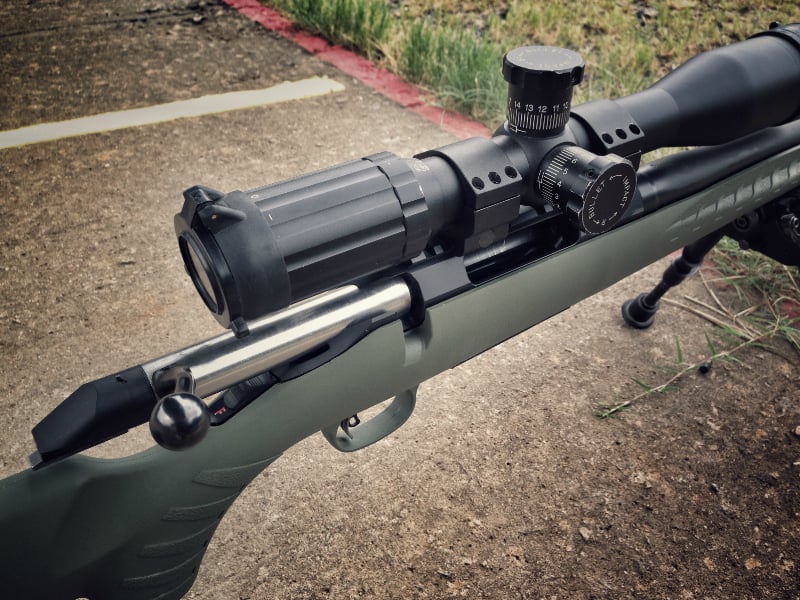
For a closer look at the what the gun can do, I loaded up some 168 grain Hornady AMAX bullets in front of some Hodgdon H380. The H380 is not a great choice for a .308 Winchester. It simply can’t provide good velocities for reaching out past around 400 yards. But I had some left over from the powder shortage of 2008, and it’s always shot very good groups, despite the rather pedestrian velocities.
It wasn’t hard to get everything averaging within 1 MOA, which is all I’m after out of this gun.
I normally work up an optimized handload for my centerfire guns, and will do so in the future, but for now I just used a good middle-of-the-road charge and called it good.
The barrel profile is heavy enough to keep groups within the boundaries of the ammunition for 10-15 shots, but after that things really start to spread out. After 20 rounds fired as fast as I could load the magazine, the group size with ZQI almost doubled.
This isn’t abnormal for any gun, but it was more than I expected. Even though the action is pillar bedded, I can’t help but think there’s some thermal shifting going on with the floppy forend.
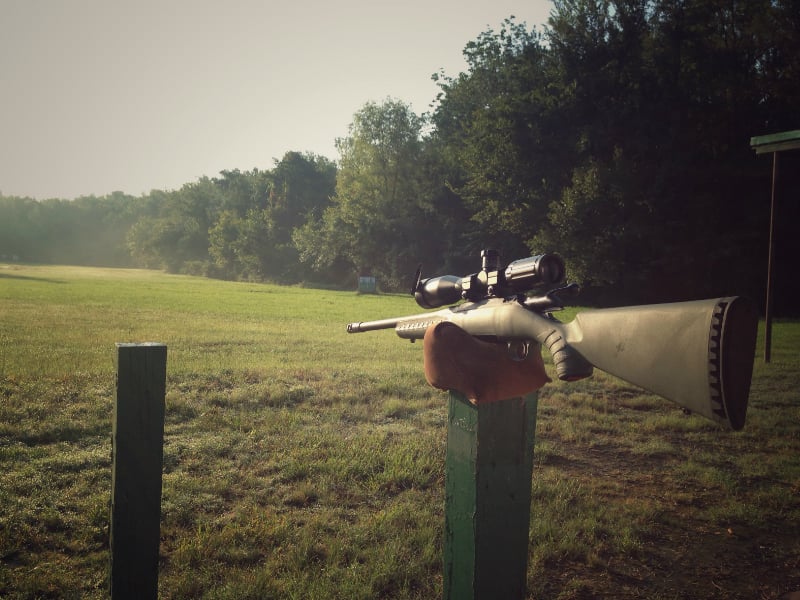
* Prices accurate at time of writing
Reliability
The Ruger American action wants to be worked quickly for maximum reliability. Slowly pulling the bolt back will cause spent casings to hang up and fall back into the action nearly every time. Brisk operation solves this. It’s not terribly sensitive to the speed at which you work the bolt, but you do have to keep it moving.
Feeding is from four-round detachable rotary magazines. The construction doesn’t exactly inspire confidence, but Ruger has a few years of experience designing and fielding reliable rotary mags. Time will tell just how they perform. So far, they’ve been 100%.
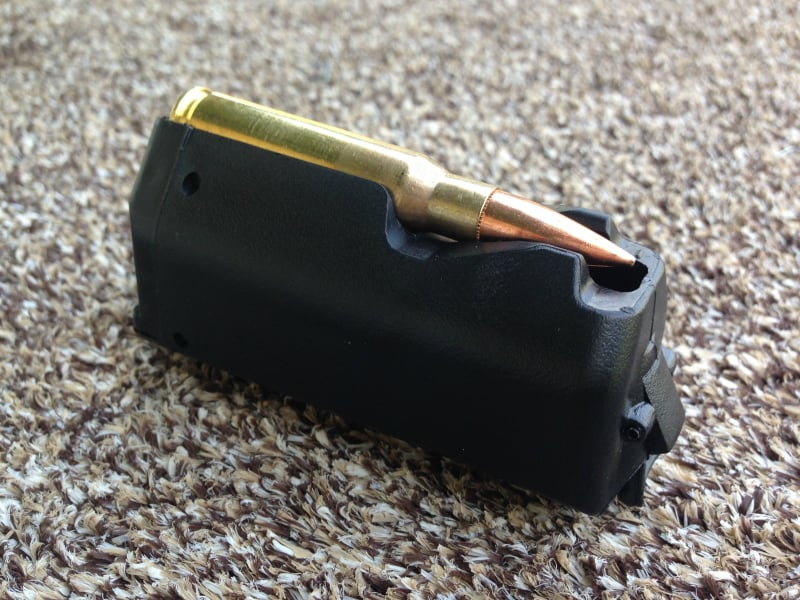
Let’s face it: most budget hunting rifles are not shot very much. It’s hard to find reports of reliability over thousands of rounds. And asking whether or not they can hold up to years of consistent use is a legitimate question.
Thankfully, we don’t have to worry about that with the Predator. If it weren’t for the sleek looking Precision Rifle that was launched last year, we would probably still be wondering about the Ruger American action. But competitors are starting to wear barrels out on their RPRs, and I haven’t read a single complaint about the working parts.
While the Precision Rifle is definitely not the same gun as the Ruger Predator, the action is nearly identical. At least, all the important stuff is. This gives me great confidence in the long-term reliability of the gun.
I do plan on shooting mine quite a bit, so time will tell for sure.
As Good as A Remington/Savage?
I would like to make the case that while the Ruger American series has a budget price, they are not budget rifles. At least in the sense that the industry has commonly come to understand sub-$400 guns as such.
Believe me, I’d love to tell you that a Remington SPS or Tikka T3 is a better gun. But… I just can’t find any solid reasons for believing that. On paper and in use, the American Predator is just a great rifle. Would a Remington shoot better? I haven’t delved deeply into handloading yet, but my experience says that the Ruger has the potential to keep up with the best of them.
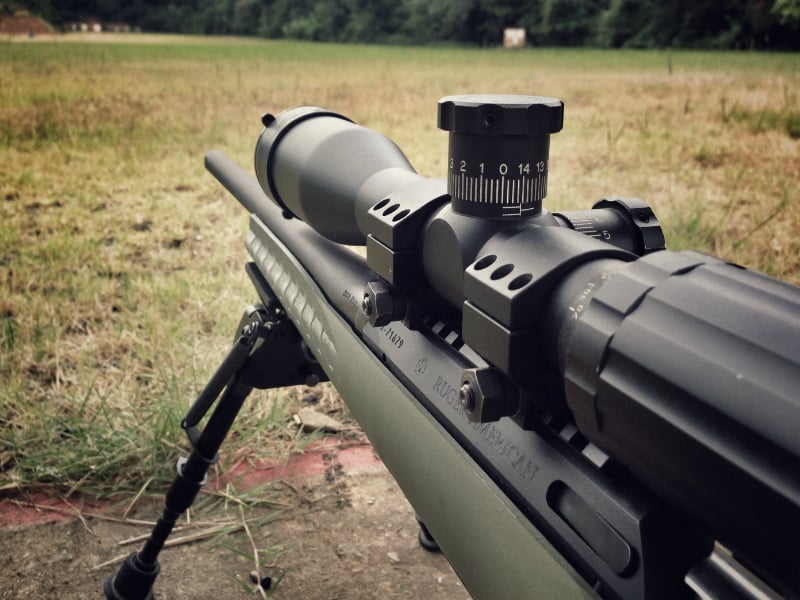
The Ruger American does suffer from a lack of aftermarket support. For now, MDT is the only company making a chassis style stock for the American. To me, the most appealing part of this is that it converts the rifle to use standard AICS magazines. I’m curious as to whether or not a chassis would keep the rifle from string the shots out as things heat up.
Boyd’s supplies laminated wood stocks, and smaller shops are making drop in bolt knobs and other accessories. Support for customization is growing.
None of that takes away from the fact that the Ruger is quite capable out of the box. Especially when compared to a stock Remington SPS.
Conclusion
I’m not done shooting the Ruger American Predator. It’s going to stay in my daily rotation of guns for the foreseeable future. The American series is unique. And this model, with its full-sized stock and shorter, midweight barrel is probably the most versatile of them all.
Is the Ruger American Predator in .308 Winchester the best deal going in hunting rifles today? I definitely think so.



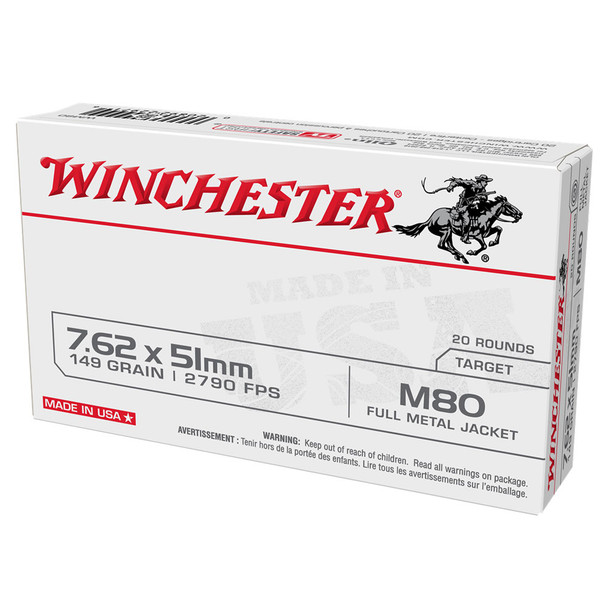



Comments (7)
Paul Hagansays:
November 24, 2016 at 7:35 amNice write up! I’m looking at putting the same scope on the same rifle; are those low rings?
Gritr Sportssays:
November 25, 2016 at 5:13 pmThanks for your question. Kip was using Burris Xteme tactical rings in this review.
Ruger American Review Posted on 1-800 Guns and Ammo - K I P | S T A T O Nsays:
December 30, 2016 at 3:28 pm[…] Finished the “published” review of the Ruger American, it’s now live on blog.1800gunsandammo.com. Read it HERE. […]
keithsays:
March 5, 2018 at 9:53 pmJust got one today! Finally I can say my glass is worth twice as much as my rifle… lets get shooting!
thr33gunssays:
July 31, 2018 at 11:00 amAs far as the true freefloat issue with the stock, a simple inlet with a rotary tool and a sanding attachment takes 30 minutes to do well and ensures freefloat under most circumstances. Great review. This has helped me sell this rifle (not a salesman) to several people. Thanks!
Gritr Sportssays:
July 31, 2018 at 7:00 pmThanks for reading, and especially for the tip on the freefloat stock! We’re glad we could help your friends decide on the right rifle.
Petersays:
December 11, 2024 at 4:57 pmMagpul has a stock for the American. Better bedding blocks, much stiffer, has M-lok hand guard and takes AICS magazines. Between $200-$300. Very nice. And, IMO, makes the Gen 1 American a competitor to the Gen 2.
Phillip Sjostromsays:
January 3, 2025 at 5:34 pmMy Ruger American is making nice groups at 700 yards but after about six or seven rounds, they start to spread 6.5 Creedmoor